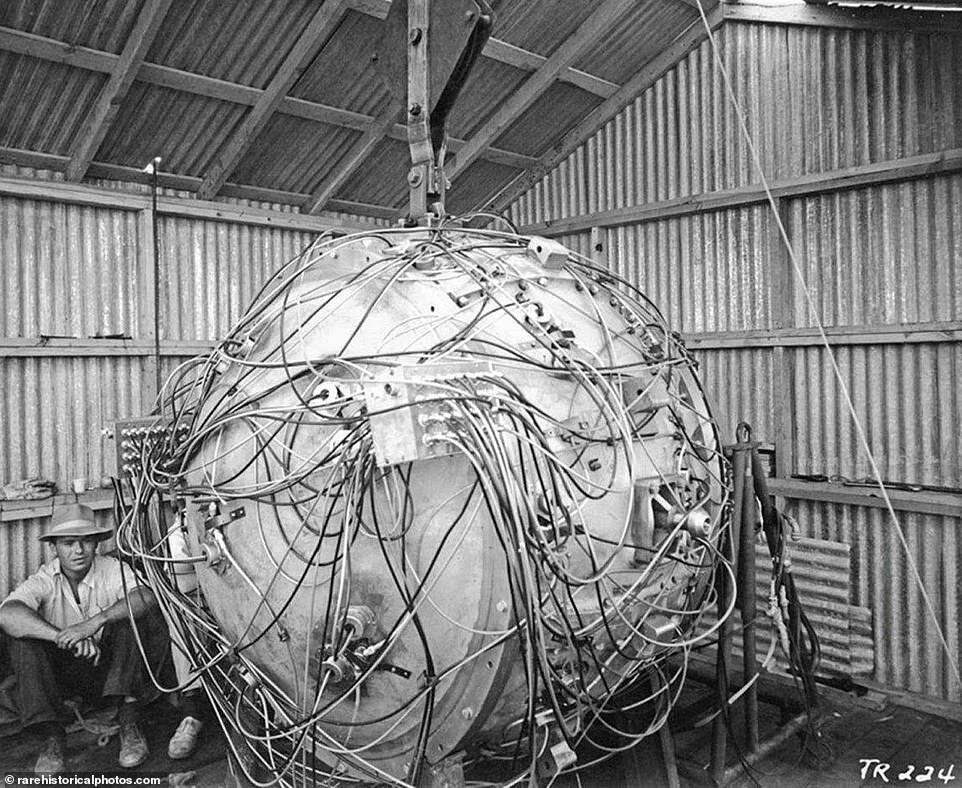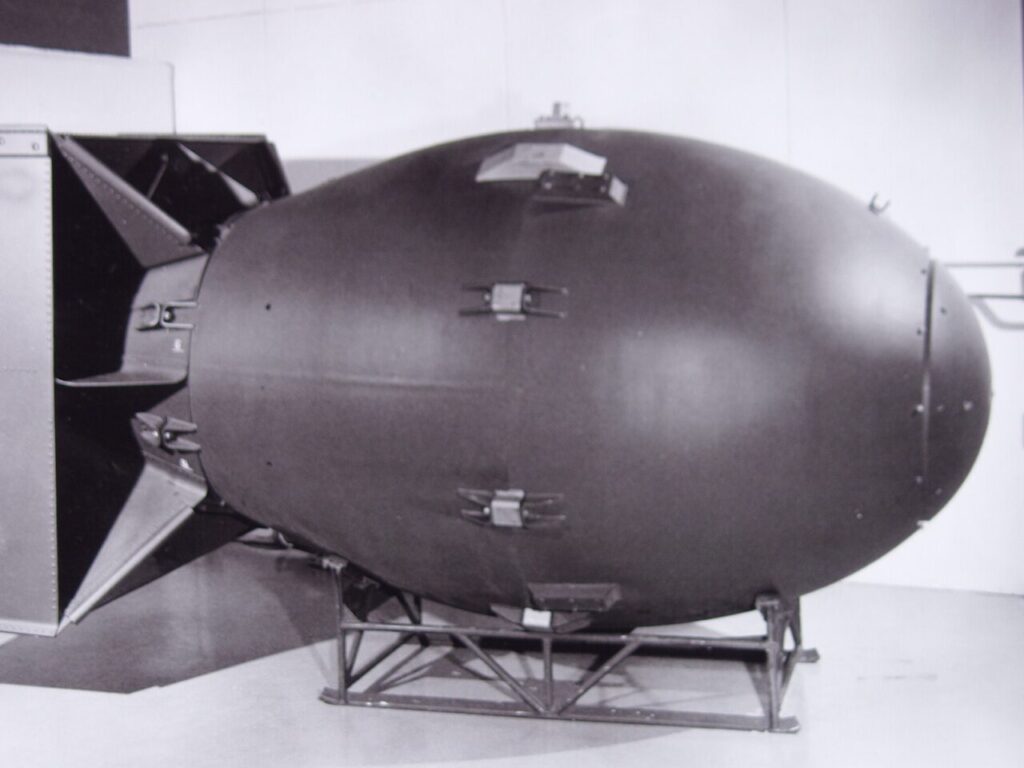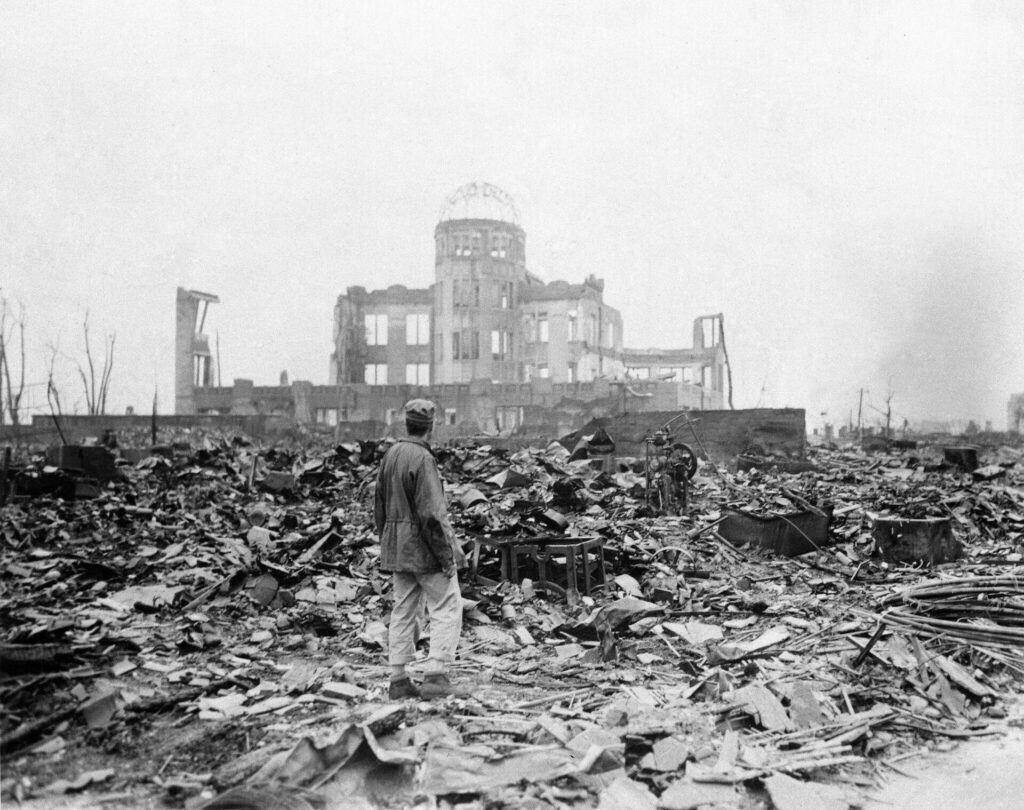
Introduction:
The atomic bomb is a weapon of massive destruction that derives its explosive power from nuclear fission reactions. When the nuclei of heavy elements like uranium or plutonium are split, an enormous amount of energy is released in the form of heat, blast, and radiation. The first atomic bombs, Little Boy and Fat Man, were developed by the United States during World War II. Little Boy used highly enriched uranium while Fat Man used plutonium. Both bombs were dropped on the Japanese cities of Hiroshima and Nagasaki in 1945, killing hundreds of thousands of people. Atomic bombs work by achieving a critical mass of fissile material, either through a gun-type mechanism or implosion. This allows a self-sustaining chain reaction to occur where neutrons split more nuclei, releasing more neutrons in a runaway process. The blast yields can range from less than a ton to over 500,000 tons of TNT equivalent.

How was the First Atomic Bomb Developed and Tested?
The development and testing of the first atomic bomb were primarily conducted under the Manhattan Project, a secret U.S. government initiative during World War II. This project aimed to harness nuclear fission for military purposes, prompted by fears that Nazi Germany was developing similar weapons.
Origins of the Manhattan Project
The groundwork for the Manhattan Project was laid in 1938 when German scientists discovered nuclear fission, leading to concerns about the potential for an atomic bomb. In 1939, physicist Albert Einstein, alongside fellow scientist Leo Szilard, wrote a letter to President Franklin D. Roosevelt, urging the U.S. to start research on atomic weapons. Initially, Roosevelt allocated only a small budget for the project, but as the war progressed, the urgency increased, leading to the formal establishment of the Manhattan Project in late 1941.
Key Developments
The project was led by General Leslie Groves and scientific director J. Robert Oppenheimer, with major research facilities established in locations such as Los Alamos, New Mexico; Oak Ridge, Tennessee; and Hanford, Washington. Significant milestones included:
- Controlled Nuclear Chain Reaction: In December 1942, Enrico Fermi and his team achieved the first controlled nuclear chain reaction at the University of Chicago, a pivotal moment that demonstrated the feasibility of a nuclear bomb.
- Bomb Design: Two types of bombs were developed:
- Little Boy, a uranium-based bomb using a gun-type design, which was dropped on Hiroshima.

- Fat Man, a plutonium-based bomb using an implosion design, which was dropped on Nagasaki. The design for Fat Man required innovative methods to compress plutonium quickly to achieve critical mass.

The Trinity Test
The culmination of the Manhattan Project was the Trinity test, conducted on July 16, 1945, at the White Sands Proving Ground in New Mexico. This was the first detonation of an atomic bomb. The bomb was placed atop a 100-foot tower and detonated just before dawn. The explosion produced a blinding flash visible for over 200 miles, and the resulting mushroom cloud reached 40,000 feet. The force of the blast created a crater and transformed sand into glass. The success of the Trinity test marked the beginning of the nuclear age and set the stage for the subsequent bombings of Hiroshima and Nagasaki, which occurred less than a month later, leading to significant loss of life and altering the course of the war. By the end of the project, the Manhattan Project had cost nearly $2 billion and employed over 120,000 people, operating under a veil of secrecy.

Impacts of Atomic Bombing of Hiroshima and Nagasaki
The atomic bombings of Hiroshima and Nagasaki in August 1945 had devastating immediate and long-term impacts:
Immediate Devastation
- The bombs killed between 129,000 and 226,000 people by the end of 1945, with roughly half the deaths occurring on the first day.
- In Hiroshima, 90% of physicians and nurses were killed or injured, and 42 of 45 hospitals were rendered non-functional.
- 70% of victims had severe burns and combined injuries, overwhelming the ability to provide medical care.
- The blasts razed and burnt around 70% of buildings in the cities.
Long-Term Health Effects
- Survivors suffered from leukemia, thyroid, breast, lung and other cancers at higher-than-normal rates for decades.
- Pregnant women had higher rates of miscarriage, infant deaths, intellectual disabilities, and impaired growth in children.
- Radiation exposure continues to increase cancer rates among survivors even today, 70 years later.
Social and Political Impacts
- The bombings led to Japan’s surrender on August 15, 1945, ending World War II.
- The U.S. gained the atomic bombings of Hiroshima and Nagasaki in August 1945 had devastating immediate and long-term impacts:
- Immediate Devastation
- The bombs killed between 129,000 and 226,000 people by the end of 1945, with roughly half the deaths occurring on the first day.
- In Hiroshima, 90% of physicians and nurses were killed or injured, and 42 of 45 hospitals were rendered non-functional.
- 70% of victims had severe burns and combined injuries, overwhelming the ability to provide medical care.
- The blasts razed and burnt around 70% of buildings in the cities.
- Long-Term Health Effects
- Survivors suffered from leukemia, thyroid, breast, lung and other cancers at higher-than-normal rates for decades.
- Pregnant women had higher rates of miscarriage, infant deaths, intellectual disabilities, and impaired growth in children.
- Radiation exposure continues to increase cancer rates among survivors even today, 70 years later.
- Social and Political Impacts
- The bombings led to Japan’s surrender on August 15, 1945, ending World War II.
- The U.S. gained significant influence in Japan during its post-war occupation.
- The bombings ushered in the Cold War and the global proliferation of nuclear weapons significant influence in Japan during its post-war occupation.
- The bombings ushered in the Cold War and the global proliferation of nuclear weapons.


How did the Atomic Bombings influence the End of World War II?
The atomic bombings of Hiroshima on August 6, 1945, and Nagasaki on August 9, 1945, played a crucial role in bringing about the end of World War II. Here are the key influences of these bombings on the war’s conclusion:
Immediate Military Impact
- Japanese Surrender: The bombings created unprecedented destruction and loss of life, leading to Japan’s surrender on August 15, 1945, just days after the attacks. The Japanese government announced its acceptance of the Allied terms for surrender, which had been outlined in the Potsdam Declaration, stating that failure to surrender would result in “prompt and utter destruction”.
- Psychological Shock: The sheer scale of devastation caused by the atomic bombs shocked both the Japanese leadership and the civilian population. The bombings demonstrated the overwhelming military power of the United States and contributed to a swift reevaluation of Japan’s ability to continue the war.
Strategic Considerations
- Avoiding a Ground Invasion: Prior to the bombings’, Allied forces were preparing for a costly invasion of the Japanese mainland, which was projected to result in significant casualties on both sides. The use of atomic bombs was seen as a means to compel Japan to surrender without the need for a ground invasion, potentially saving countless lives.
- Confirmation of Military Effectiveness: The successful deployment of atomic bombs validated the extensive resources invested in the Manhattan Project, demonstrating the effectiveness of nuclear weapons as a strategic military tool.
Political and Global Consequences
- U.S. Influence in Post-War Japan: Following Japan’s surrender, the United States occupied Japan and implemented significant political, economic, and social reforms. This occupation laid the groundwork for Japan’s transformation into a democratic nation and a key ally of the U.S. in the post-war era .
- Nuclear Arms Race: The bombings marked the beginning of the nuclear age, influencing global military strategies and leading to the Cold War. The existence of nuclear weapons became a central element of international relations, prompting an arms race primarily between the United States and the Soviet Union.
In summary, the atomic bombings of Hiroshima and Nagasaki were pivotal in hastening the end of World War II, reshaping Japan’s post-war landscape, and altering the course of global military and political dynamics for decades to come.
Read More Post
Machiavellianism: The Philosophy of Acquiring Power through Unethical Method


